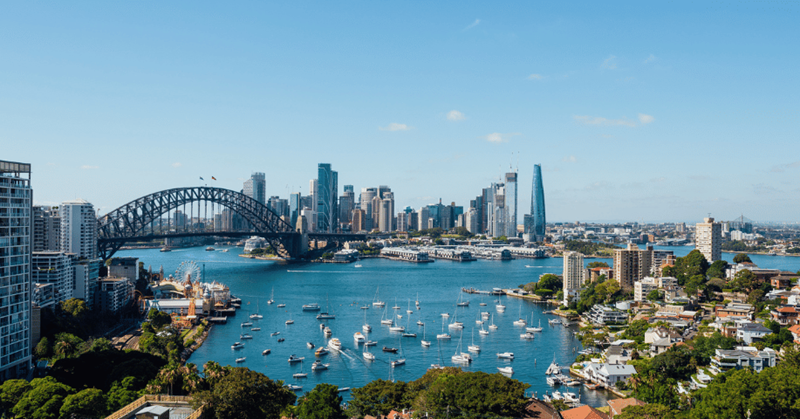
An overview of Australia
Australia is a Southern Hemisphere country that consists of a large mainland, the island of Tasmania and many smaller islands. Stradling both the Indian and Pacific Oceans, it is the smallest and oldest continent on Earth. Australia’s isolation and position explains much of the uniqueness of its plant and animal life. Its flora and fauna include hundreds of kinds of eucalyptus trees and the only egg-laying mammals (known as monotremes) on Earth, the platypus and echidna. Despite its size, Australia has a low population density with almost all the major cities scattered along the coastlines – and these are the spaces most Australians call home.
Australia is divided into six states and two territories. Each state has its own government, with an overarching federal government uniting them. While English is Australia’s national language, the country is linguistically diverse due to continued migration throughout its history as a nation.
Quick facts
Official language: English
Capital: Canberra, in the Australian Capital Territory (ACT)
Largest city: Sydney
Population: over 25 million
Currency: Australian dollar (AUD)
Why move to Australia?
Weather
Australia’s weather varies depending on geography. In the north, you will find both hot, dry dessert and tropical regions with lush rainforests, and vast farmlands where much of the country’s produce grows. In the south, you can experience much more variable weather, which allows for prime ski-destinations within driving range of pristine beaches. No matter what weather you’re drawn to, there’s a place in Australia for you!
Lifestyle
Australians are known to enjoy spending time outside, driven by (mostly) warm weather and vibrant city scenes. Shared experiences are an iconic part of their lives through large cultural events like film and comedy festivals, and sporting seasons that are celebrated across the country like the Melbourne Cup, Australian Open, Grand Prix and the Boxing Day Test. A strong and vibrant agricultural industry means they are also proud of their Australian grown products – from wine to wheat, canola to cattle, and much more.
Local towns also boast strong traditions of music, sport, markets and crafts, and dining experiences.
Culture
Australia’s multiculturalism is reflected in its varied cuisines, lifestyles and cultural experiences. Considered to be one of the world’s major ‘immigrant nations’, over a quarter of the population is born overseas, with migrants coming from countries like the UK, India, China, and New Zealand. As the oldest continuous civilisation in the world, Australia’s indigenous people, the Australian Aboriginal and Torres Strait Islanders, also continue to play a major role in Australia’s cultural identity and connection to land.
Healthcare
Australia has one of the best healthcare systems in the world. Combining public and private insurance options, Australia caters to people no matter their age, demographic or socio-economic status. Australia's health system is underpinned by Medicare – a universal public health insurance scheme, and private health insurance. Because of the scope of the healthcare system, funding and health spending is expansive – roughly $1 in every $10 spent in Australia is dedicated to health.
Did you know?
Australians are proud of their flora and fauna for a good reason! More than 80% of Australia’s plants and animals are unique to the continent and found nowhere else in the world. Australia’s list of native and protected species includes Tasmanian devils, koalas, kangaroos, and echidnas.
Popular destinations and landmarks
The Great Barrier Reef
As the world’s most extensive coral reef ecosystem, the Great Barrier Reef is a popular destination for anyone from adventure-seekers to nature-lovers. With over 2,500 reefs, 900 islands, and canyons of deep-sea coral, this impressive living structure is visible from space!
Uluru
One of the world’s largest monoliths, Uluru is an ancient formation and deeply spiritual place for local indigenous communities. Often referred to as the heart of the ‘Red Centre’, it’s a destination famous for the awe-inspiring landscape, and cultural significance.
Cradle Mountain Lake St Clair National Park
The Cradle Mountain Lake St Clair National Park is part of the Tasmanian Wilderness World Heritage Area, one of the world’s last remaining stretches of temperate rainforest. Renowned for its natural beauty and abundant tracks, this is the ultimate location for a nature-lover to explore.
The Blue Mountains
Gorgeous lookouts, dramatic waterfalls, vibrant rainforest – the Blue Mountains have a lot to offer. Aside from the natural beauty, the region is famous for local towns, vineyards, and restaurants.
Quick tip: Rural Australia is full of opportunities
With many Australians moving around and relocating to different towns and states after COVID, the need for skilled healthcare professionals to work in vibrant regional centres is growing and your experience is in high demand! There are plenty of further education and specialisation opportunities for healthcare workers, for example the NMBA runs Continual Professional Development (CDP) initiatives, and some states are even offering financial incentives to promote regional work, such as South Australia. Don’t forget to look at smaller towns and cities in each state when job hunting.